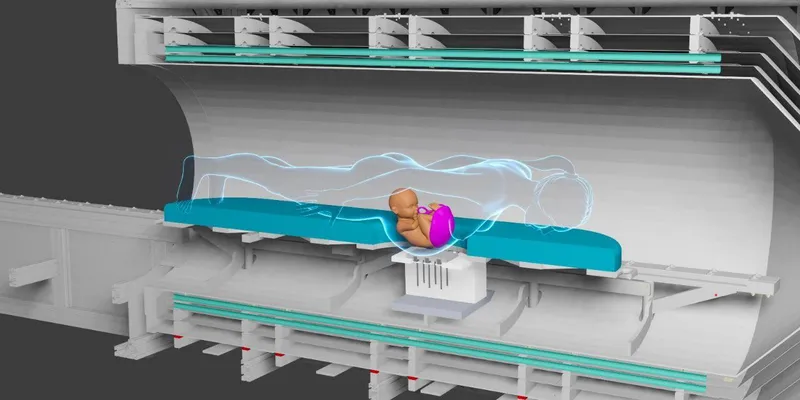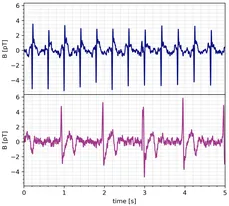Heart Shield
Together with the German Heart Center we have built the first European device for fetal magnetocardiography based on optically pumped magnetometers.
Fetal magnetocardiography (fMCG) is a non-invasive method to study the heartbeat of the unborn child. Unlike (fetal) electrocardiography, (fetal) magnetocardiography works with the magnetic fields rather than the electric fields emitted by the heart. These magnetic fields are generated during the contraction of the heart and can provide information about its state of health. In the recorded signals, similar to the ECG, the characteristic heartbeat properties can be identified and interpreted by cardiologists. This way, heart defects or heart diseases can be detected and treated at an early stage
Our currently clinically used prototype is located at the Chair for Precision Measurements under Extreme Conditions at the Physics Department of TUM..
The emitted magnetic fields of the fetal heart are in the pico-Tesla range. Since these signals are much smaller than the earth's magnetic field (40 µT), active and passive magnetic shielding is necessary. In addition, this can also be used to suppress other interfering factors, such as the 50 Hz noise, which is in the nano-Tesla range and caused by the electricity network.
Theses topics
Student trainee positions and thesis projects are available on all aspects of the project:
- Passive magnetic shielding from mumetal
- Active magnetic compensation
- Detection of magnetic signatures with optically pumped magnetometers
- Analysis of existing data
- Simulation of bio-magnetic signals
- Ongoing work with patients in fMCG acquisition
Contact
M.Sc. Lena Wunderl
- Tel.: +49 (89) 289 - 53716
- Raum: 5101.EG.293
- lena.wunderl@tum.de



